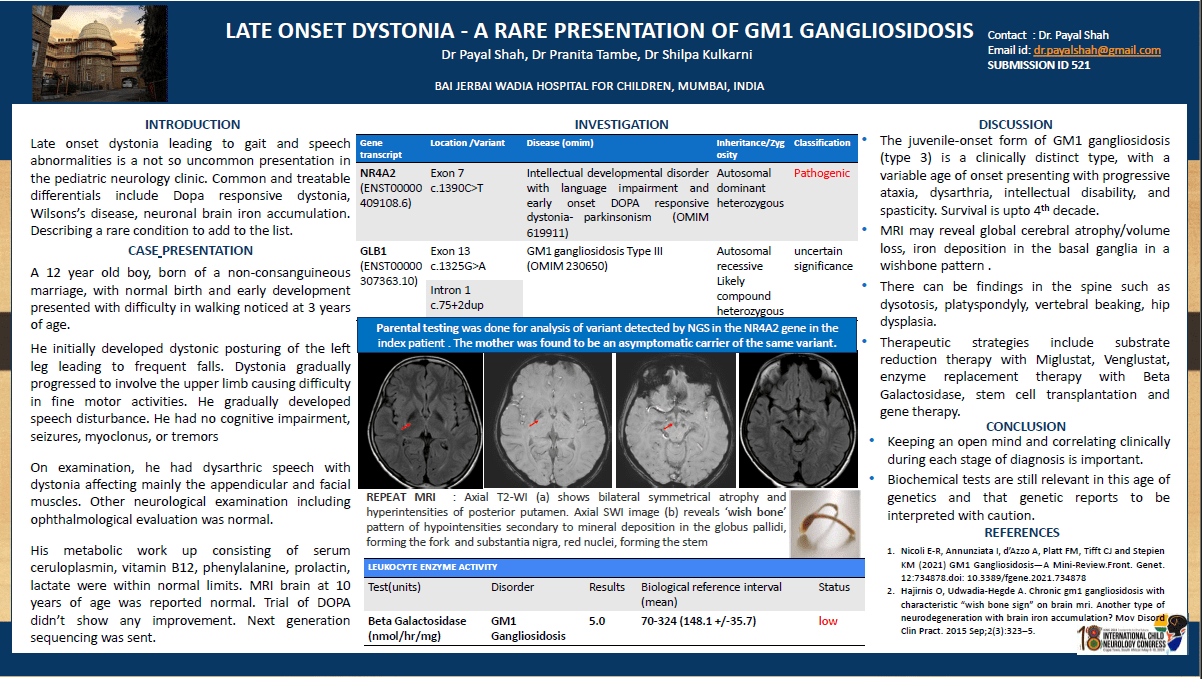Late Onset Dystonia- A Rare Presentation Of GM1 Gangliosidosis
TITLE: Late onset Dystonia – a rare presentation of GM1 gangliosidosis INTRODUCTION: Late onset dystonia leading to gait and speech abnormalities is common presentation in pediatric neurology clinic. Common and treatable differentials include Dopa responsive dystonia, Wilsons’s disease, Neuronal brain iron accumulation. Here we are describing a rare condition to add to the list. METHOD: Clinical, biochemical and radiological data of case collected retrospectively. RESULTS: Case Report- 12 year old boy with normal birth & early development presented with chronic progressive difficulty in walking with gait difficulty and frequent falls and progressive dysarthria. On examination, child had normocephaly with limb dystonia with normal power and reflexes. Gait observed was toe first with forward stoop. Sensory system, spine examination were normal. On evaluation, metabolic work up including serum ceruloplasmin, vitamin B12, phenylalanine, prolactin, lactate were normal, MRI Brain revealed bilateral globus pallidus and substantia nigra hypointensities on T2 with blooming on SWI and linear area of gliosis in posterior putamen bilaterally suggestive of NBIA. Genetics was sent which showed 2 mutations: NR4A2 gene (Pathogenic) and GLB1 gene (VUS) but parental sanger revealed NR4A2 gene mutation in asymptomatic mother. MRI on relook revealed “Wishbone pattern” of iron accumulation in globus pallidus seen in GM1 gangliosidosis. Further, B- galactosidase enzyme assay in leucocytes showed low levels confirming the diagnosis of GM1 gangliosidosis. CONCLUSION: Keeping an open mind and correlating clinically during each stage of diagnosis is important. Biochemical tests are still relevant in era of genetics and genetic reports to be read cautiously.
Pranita Tambe
B J Wadia Hospital for children
India
Shilpa Kulkarni
B J Wadia hospital for children
India
Payal Shah
B J Wadia hospital for children
India

Payal Shah
B J Wadia hospital for children
India